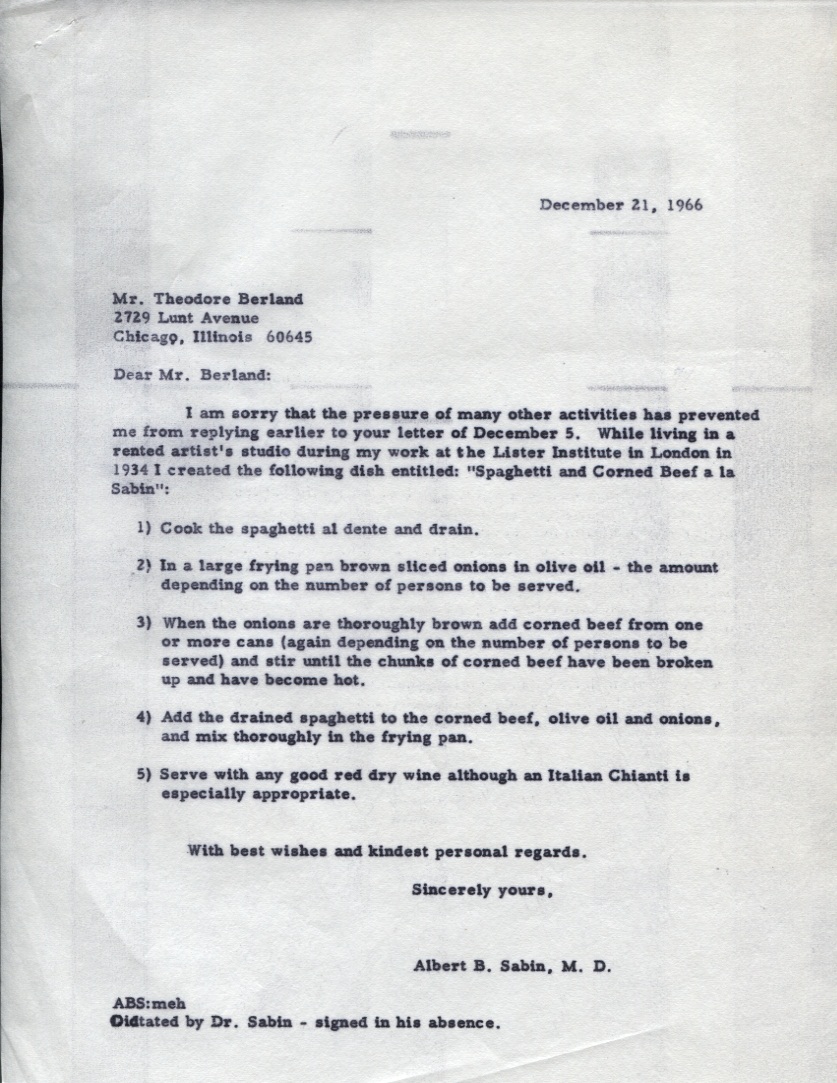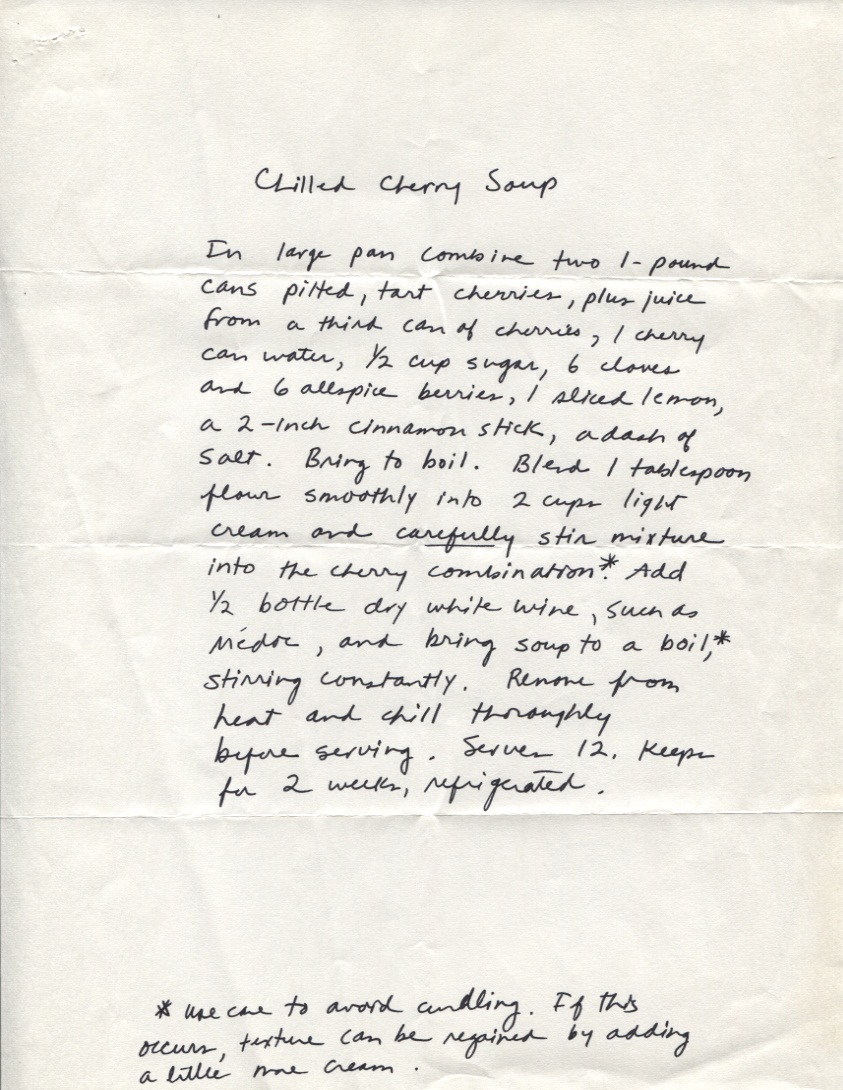Early on in the digitization project, I found a couple of folders that referred to interviews with Dr. Sabin that resulted in book chapters about him. These folders that contained correspondence between Dr. Sabin and the authors provided some insight. Today, I wanted to share a little about this in the blog.
The first that I came across was a book by Theodore Berland called The Scientific Life (1962). Dr. Sabin is featured in Chapter 5, called “It Is Never Either-Or.” The second chapter I found was in a book called The Virus that Ate Cannibals (1981) by Carol Eron. Her chapter on Dr. Sabin was called “The Sculptor.” Both of these authors wrote to Dr. Sabin saying they wanted to write a book for the general reader was similar to the book Microbe Hunters by Paul de Kruif, which Dr. Sabin had said was an influential book on his life and career.
Mr. Berland and Dr. Sabin seemed to have a cordial professional relationship, based on the letters that are in our collection. They discuss Sabin’s upcoming interview, potential photographs, and other matters related to the chapter. An interesting exchange between the two came a couple years after Berland’s book was published. Mr. Berland contacted Dr. Sabin again, asking for a favorite recipe for a book called The Doctor’s Cookbook. I have scanned the letter that Dr. Sabin sent to Mr. Berland with the recipe for “Spaghetti and Corned Beef a la Sabin.” Does this look like a recipe you will go home and try? Berland wrote Dr. Sabin back, asking for more details, such as his corned beef brand preference and how many people this recipe would serve. For your information, if you want to make this at home tonight, you can use any brand, and it serves about 3 people.
Unfortunately, I haven’t been able to locate The Doctor’s Cookbook, so I am unsure if Dr. Sabin’s spaghetti recipe ever made it to print (until now!)
The letters between Ms. Eron and Dr. Sabin contain a little bit more information about the process behind writing this chapter, as well as Dr. Sabin’s opinions on the chapter. For example, we have a draft of the original chapter that Ms. Eron wrote. Dr. Sabin, being the perfectionist and opinionated man that he was, gave her many different suggestions throughout the text to “correct any errors of fact.” Taking a look at the first draft, Dr. Sabin crossed things out and drew circles and arrows all over the place! (This was Dr. Sabin’s typical editorial style. We have many other examples throughout the collection.)
Found mixed in with Ms. Eron’s correspondence to Dr. Sabin was a recipe for Hungarian chilled cherry soup, which she received from a chef in Boston. Dr. Sabin wrote back saying, “Many thanks for your letter of October 1 and for the mouth-watering recipe for chilled cherry soup that you sent me. Unfortunately, I am on a restricted diet right now, but one of these days I expect to cheat and have some of this soup.”
I thought that it was such a coincidence that both authors had written to Dr. Sabin about recipes! Perhaps there are more recipes hidden within Dr. Sabin’s correspondence. If so, I could put together a Sabin cookbook!
If you know of any other book chapters or articles that have been written about Dr. Sabin, particularly written by one of his contemporaries, let me know. I’d like to make sure that we have as much material about Dr. Sabin as we can (and check for other recipes!)
Note: The University of Cincinnati Libraries owns a couple copies of the Eron book (call number QR364 .E76 1981), but we do not own a copy of the book by Berland.
In 2010, the University of Cincinnati Libraries received a $314,258 grant from the National Endowment for the Humanities (NEH) to digitize the correspondence and photographs of Dr. Albert B. Sabin. This digitization project has been designated a NEH “We the People” project, an initiative to encourage and strengthen the teaching, study, and understanding of American history and culture through the support of projects that explore significant events and themes in our nation’s history and culture and that advance knowledge of the principles that define America. Any views, findings, conclusions, or recommendations expressed in this blog do not necessarily reflect those of the National Endowment for the Humanities.


